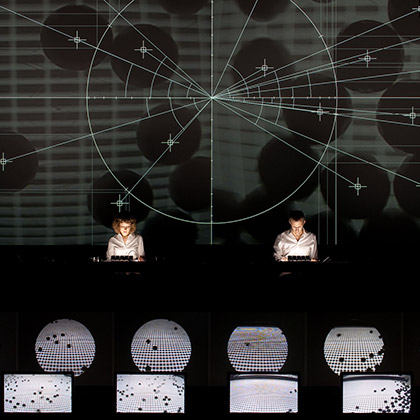Ryoji Ikeda’s superposition brings a Japanese visual and sound artist to prove that art and science can interact. As a part of UMS’s International Theater Series, Ikeda creates a show that combines “synchronized video screens, real-time content feeds, digital sound sculptures, and for the first time in Ikeda’s work, human performers.” (UMS.org)

When: Friday, October 31 at 8pm -and- Saturday, November 1 at 8pm
Where: Power Center for Performing Arts
Tickets range from $12-20 for students, with ID. If you are first-year or sophomore, you are eligible to go to an UMS performance for free thanks to Bert’s Tickets program. Read more about how to claim your Bert’s Ticket and/or use other Student Ticket deals here!






